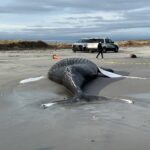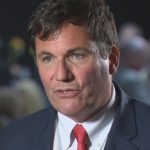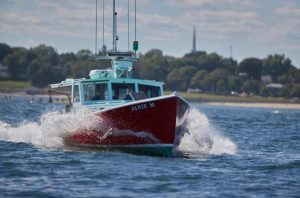Tag Archives: Federal Energy Regulatory Commission
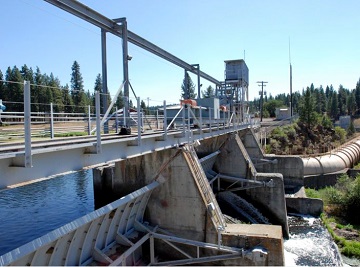
US regulators to vote on removal of four dams on lower Klamath River
The largest dam demolition and river restoration plan in the world could be close to reality Thursday as U.S. regulators vote on a plan to remove four aging hydro-electric structures, reopening hundreds of miles of California river habitat to imperiled salmon. The vote by the Federal Energy Regulatory Commission on the lower Klamath River dams is the last major regulatory hurdle and the biggest milestone facing a $500 million demolition proposal championed by Native American tribes and environmentalists for years. But plans to remove the dams have been controversial. “The whole question is, will this add to the increased production of salmon? It has everything to do with what’s going on in the ocean (and) we think this will turn out to be a futile effort,” >click to read< 11:10
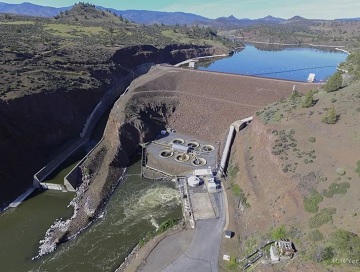
FERC Staff Recommend Removal of Lower Klamath Dams in Final Environmental Document
After nearly two decades of painstaking negotiations and political turbulence, the largest river restoration project in American history is set to begin early next year. This morning, Federal Energy Regulatory Commission (FERC) staff released the long-awaited Final Environmental Impact Statement (FEIS) for license surrender, decommissioning and removal of four dams – Copco No. 1, Copco No. 2, J.C. Boyle and Iron Gate – on the Lower Klamath River, a move that would restore over 400 miles of critical salmon spawning habitat in the Klamath Basin. The 1,242-page document contains FERC staff’s evaluation of the environmental, cultural and economic impacts associated with dam removal. In short, staff agree that dam removal is the best path forward. >click to read< 10:08
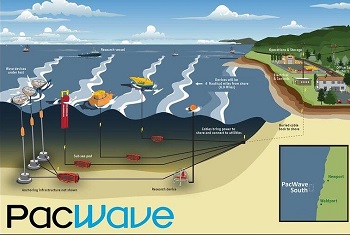
Federal lease allows Oregon State’s offshore wave energy testing facility to move ahead in 2021
The lease for PacWave South is the first marine renewable energy research lease the Bureau of Ocean Energy Management has issued in federal waters off the West Coast. The estimated $80 million facility will be located offshore southwest of Newport, Oregon. The project still must receive licensing approval from the Federal Energy Regulatory Commission before it can move forward. Obtaining the lease is an essential component of the licensing requirements. >click to read< 12:22
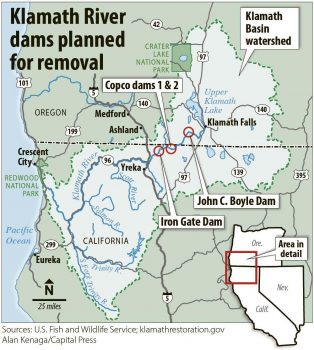
Cost, timeline for removing Klamath River dams updated
Removing four hydroelectric dams along the lower Klamath River in Southern Oregon and Northern California is expected to cost just under $434 million and could happen by 2022, according to a new filing with the Federal Energy Regulatory Commission. The nonprofit Klamath River Renewal Corp. submitted plans with FERC in 2018 to decommission and demolish J.C. Boyle, Copco Nos. 1 and 2 and Iron Gate dams, which block about 400 miles of upstream habitat for migratory salmon and steelhead. >click to read< 19:06
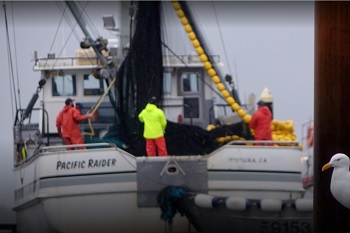
Coos Bay Fishermen Brace For Impacts From Jordan Cove And Channel-Widening Projects
The headland that look out over the ocean entrance to Coos Bay has been given a rather descriptive name by local fishermen. “We call it Chickenshit Point,” says Nick Edwards chuckling. Perhaps it’s because the people watching from up on the hill aren’t considered as brave as those on the boats crossing the dangerous Coos Bay bar below. “A lot of us will come up here and watch. Everybody goes, ‘He’s made it across the bar. He’s made it across the bar!’” he says. >click to read<09:45
Big step for Oregon wave demo of hydrokinetic energy test project
 A 20MW wave-energy test project off Oregon has cleared another permitting hurdle. The US Bureau of Ocean Energy Management today said it is appropriate to issue a lease on a non-competitive basis for the site offshore Newport.,, 33-square mile area about four miles offshore, where water depths range from 180 to 230 feet. Read more here 09:46
A 20MW wave-energy test project off Oregon has cleared another permitting hurdle. The US Bureau of Ocean Energy Management today said it is appropriate to issue a lease on a non-competitive basis for the site offshore Newport.,, 33-square mile area about four miles offshore, where water depths range from 180 to 230 feet. Read more here 09:46
Year one of Eastport tidal turbine research presents challenges
 EASTPORT, Maine — Months of underwater testing in Cobscook Bay of experimental, tidal-based electrical generation technologies were not without its challenges, according to a research report recently filed with the Federal Energy Regulatory Commission. continued
EASTPORT, Maine — Months of underwater testing in Cobscook Bay of experimental, tidal-based electrical generation technologies were not without its challenges, according to a research report recently filed with the Federal Energy Regulatory Commission. continued




































